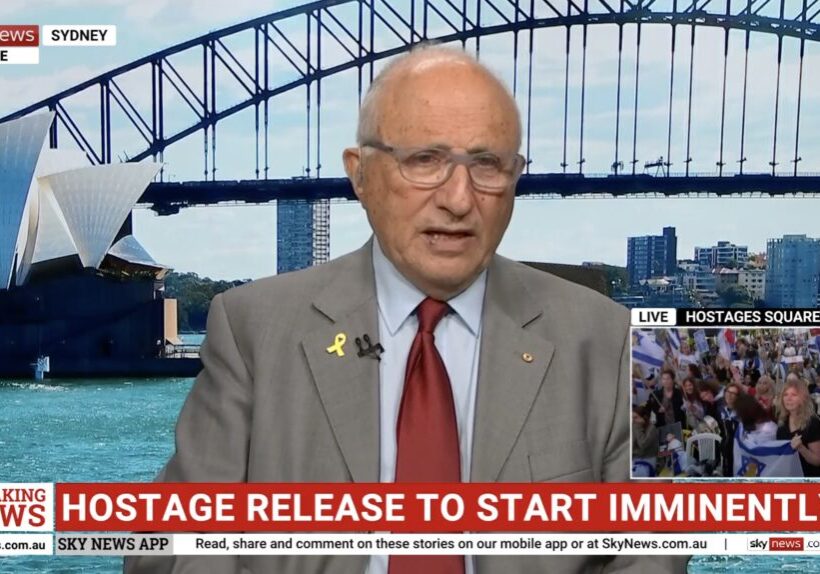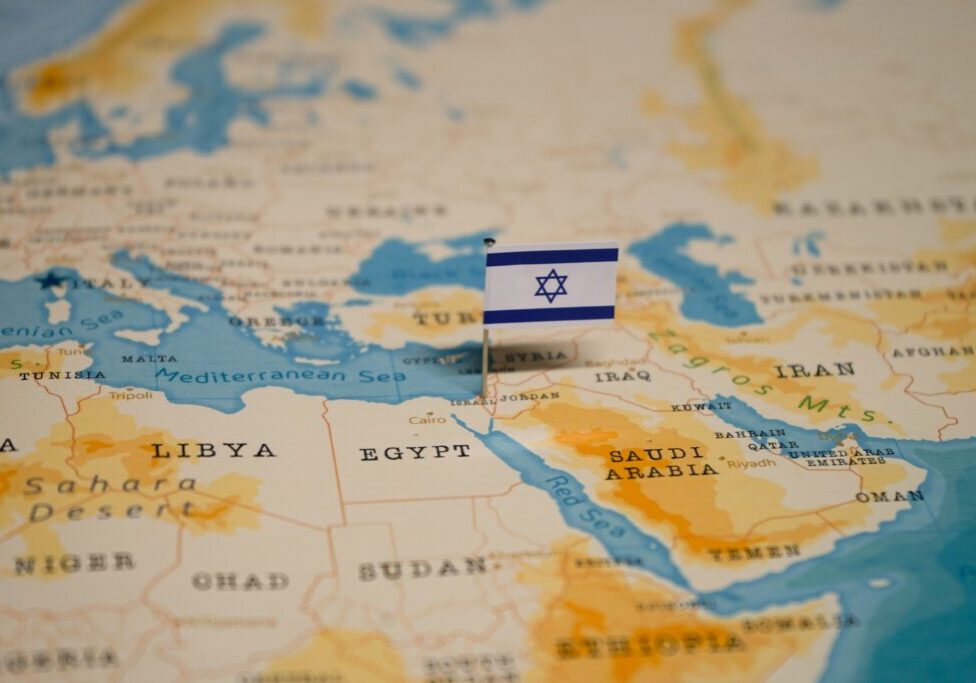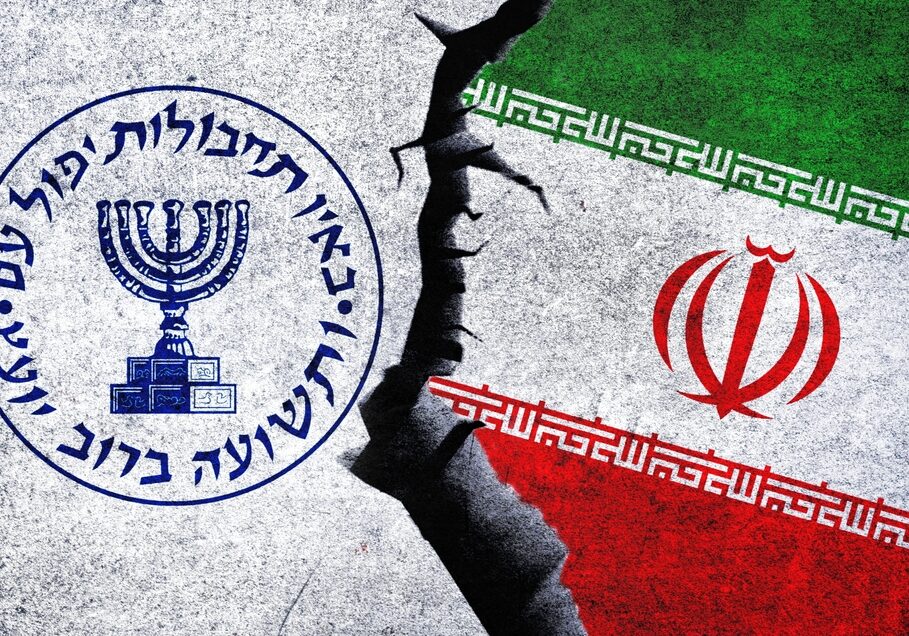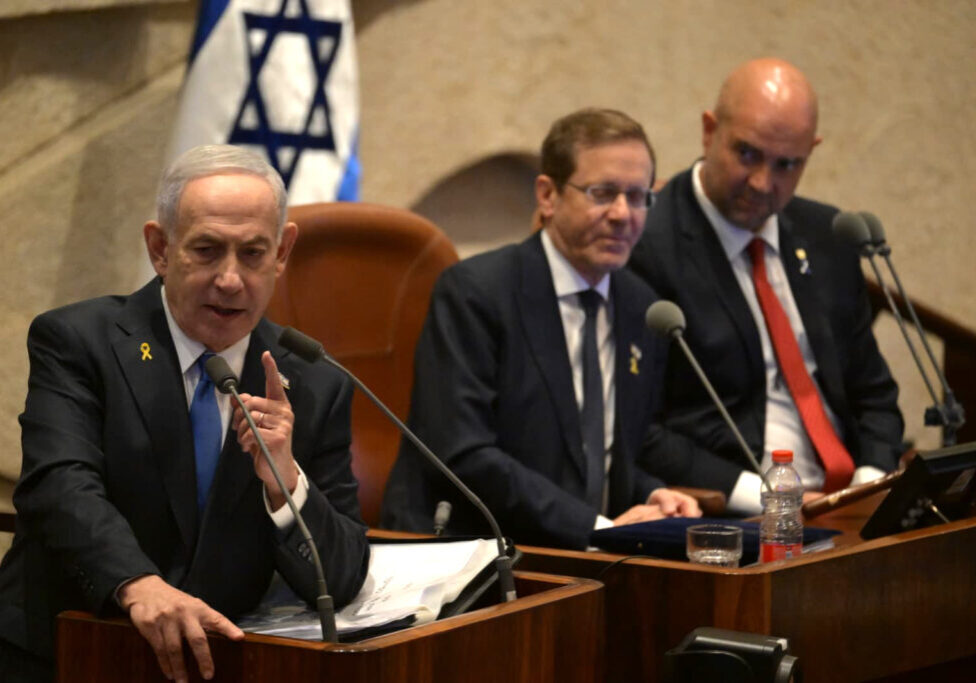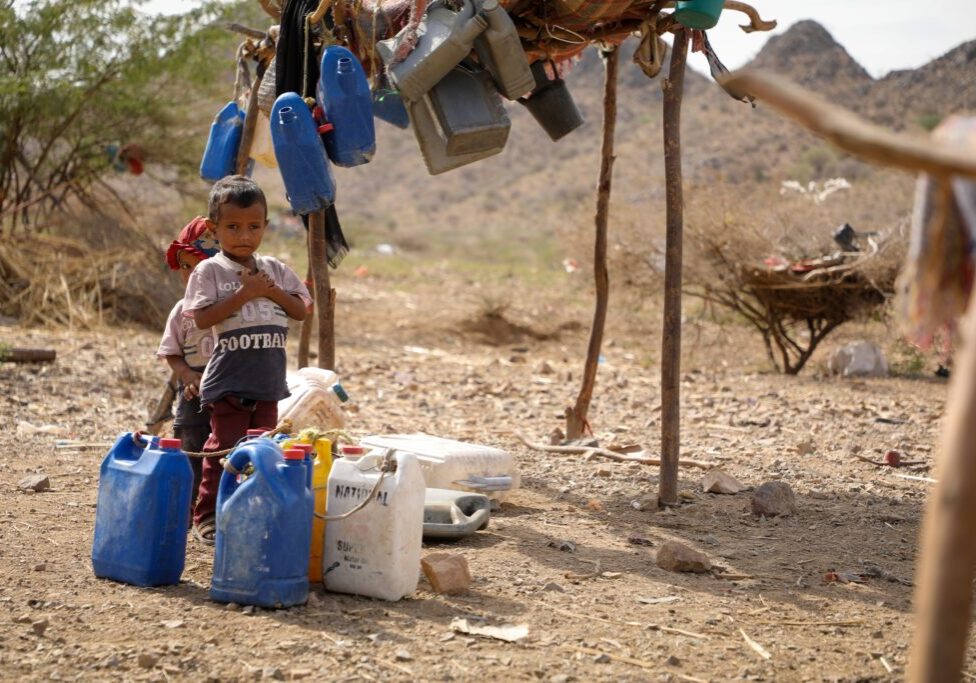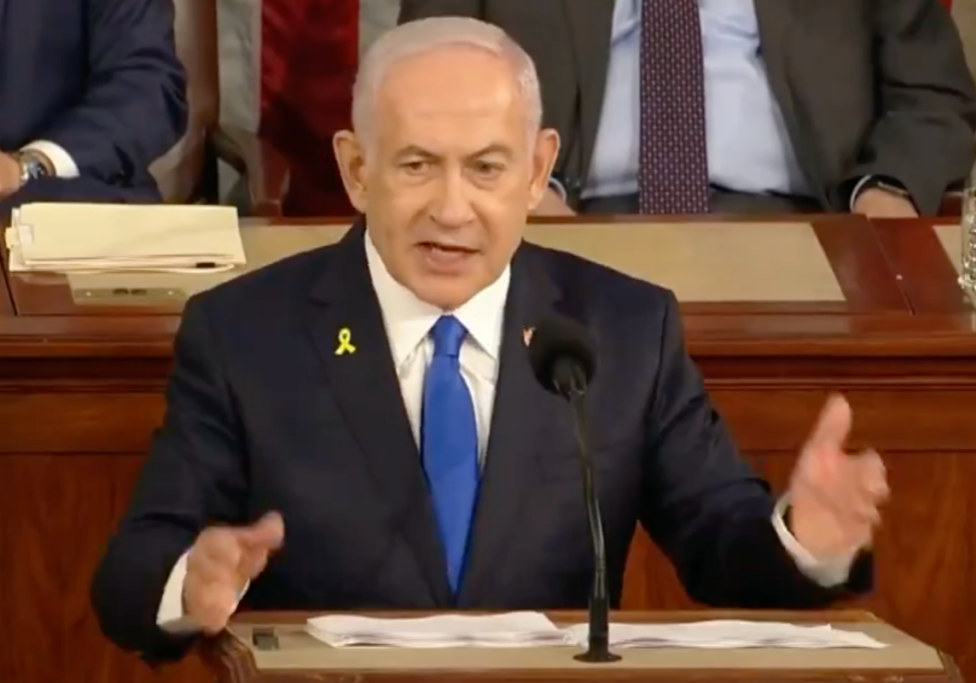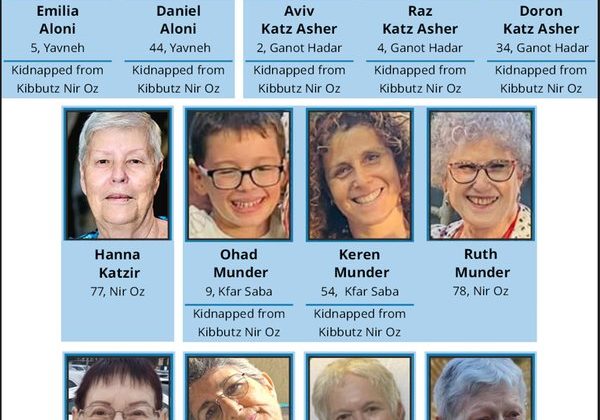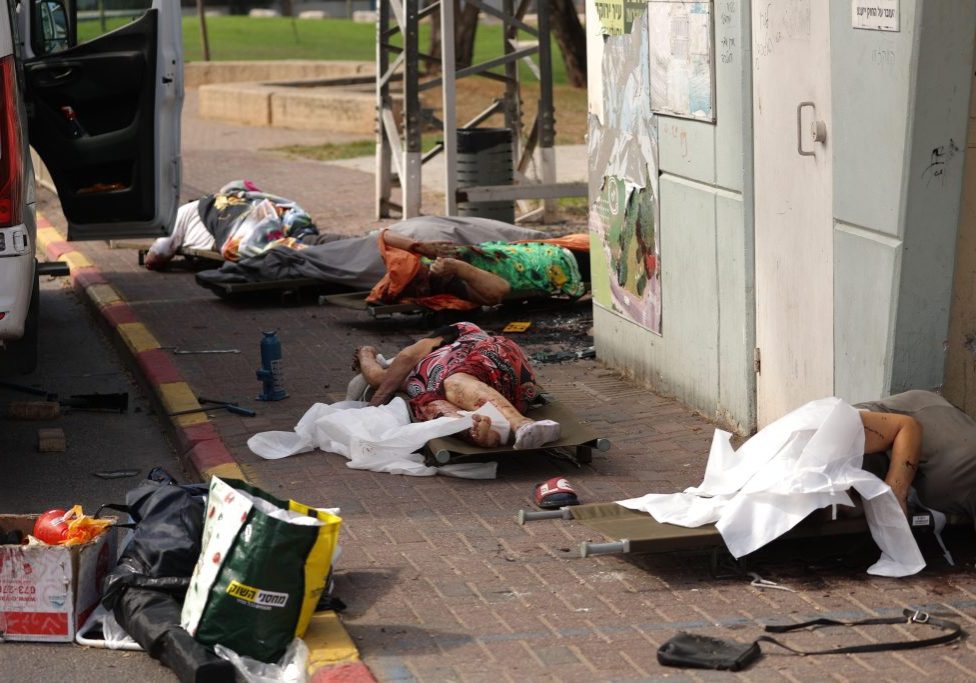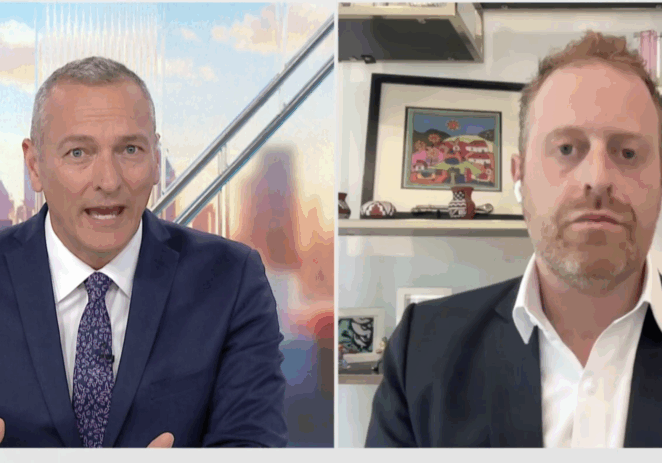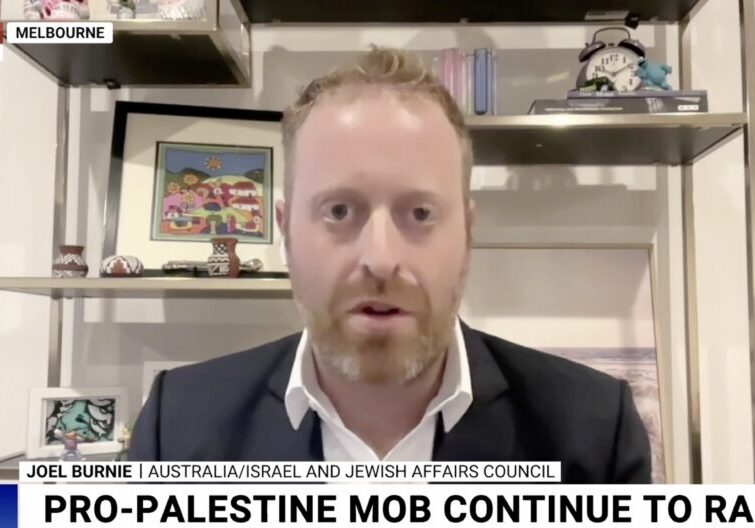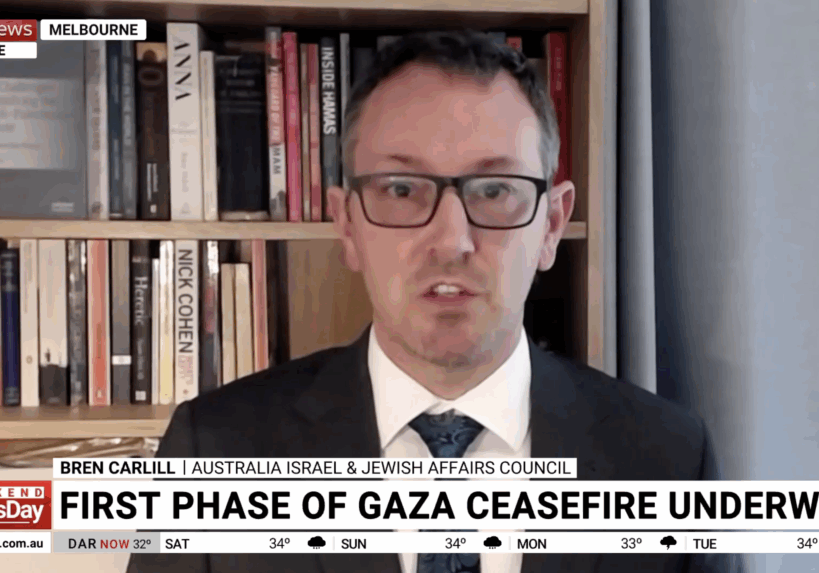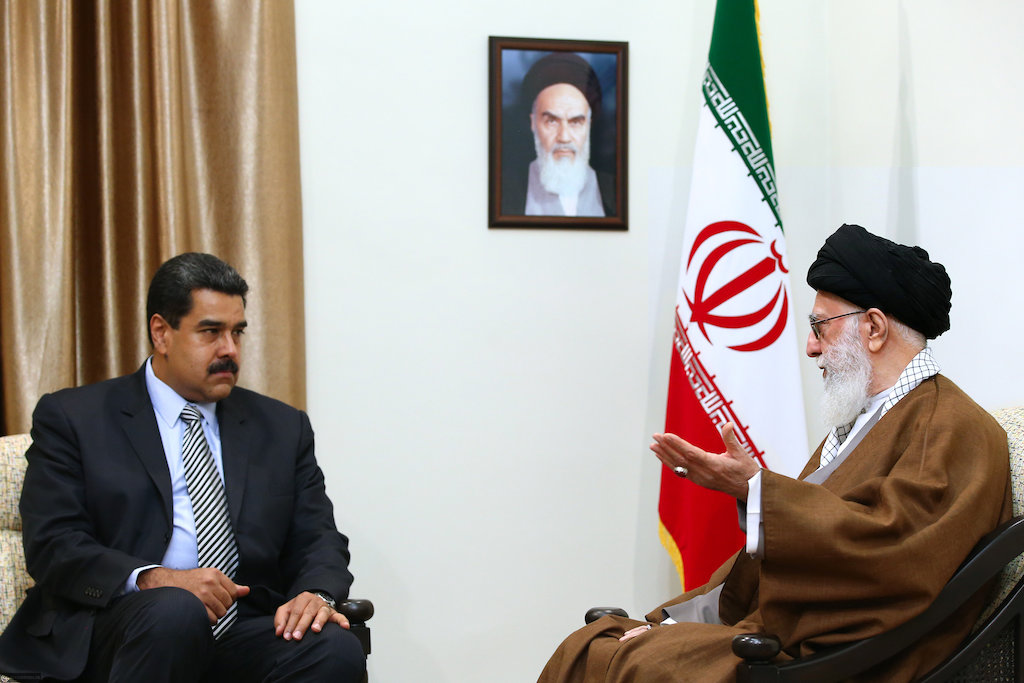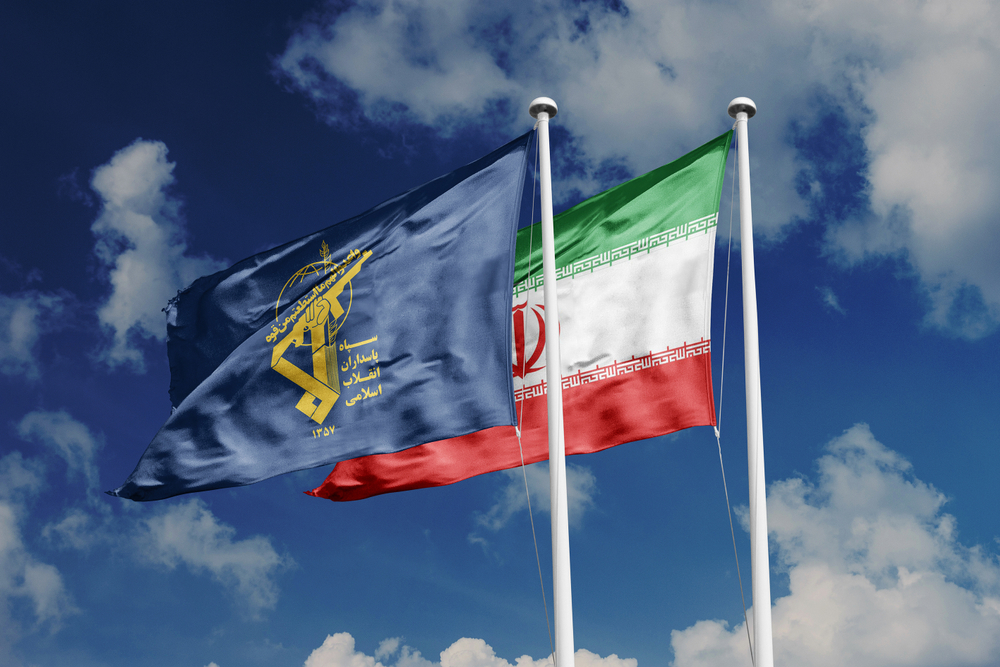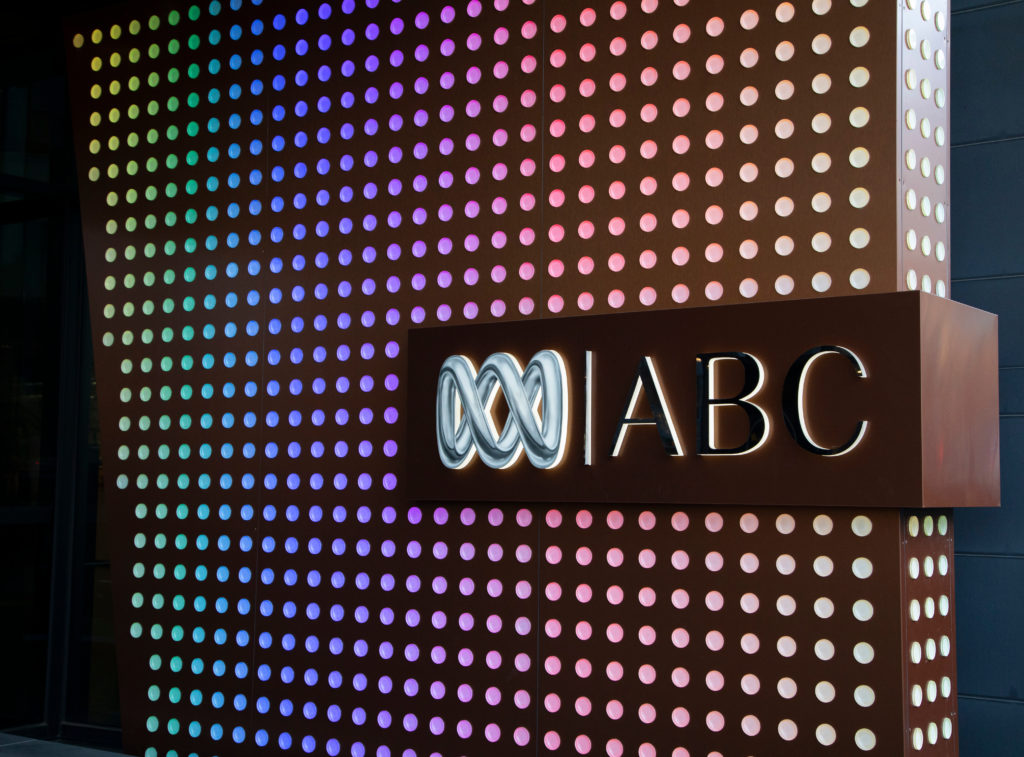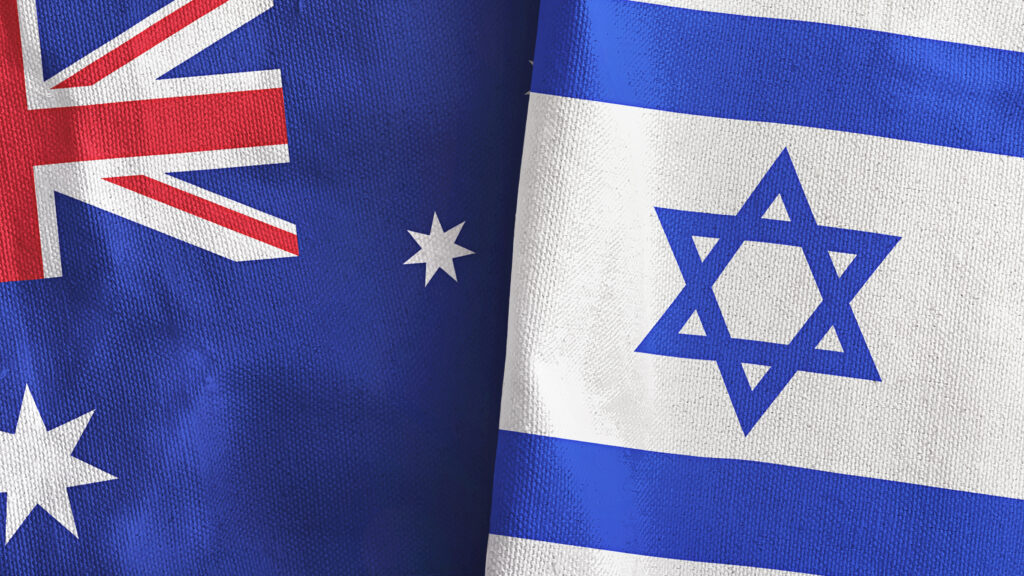FRESH AIR
Media Matters: Smoke and Ire over IHRA
July 30, 2025 | Allon Lee

On the night of July 4, there was an attempted arson attack on the East Melbourne Hebrew Congregation Synagogue, and violent harassment of diners at Miznon, a nearby Israeli-owned restaurant. The attacks shocked a country that been lulled into a false sense of complacency after the frequency of such headline-grabbing incidents had appeared to ease since January.
These attacks brought greater urgency and media interest to the release, six days later, of the recommendations of Australia’s inaugural Special Envoy to Combat Antisemitism, Jillian Segal.
Much of the media’s attention was directed at Segal’s recommendations that the International Holocaust Remembrance Alliance (IHRA) working definition of antisemitism be “used across all levels of government and public institutions to inform their practical understanding of antisemitism;” a proposal that the Envoy’s office would monitor the media to identify trends which might contribute to antisemitism; and a report card system for universities and the arts on confronting antisemitism with potential financial penalties imposed in the most extreme cases.
Media interviews with Segal and others following the report’s release were particularly focused on the potential implications for the rights of individuals to exercise their free speech. Or, to put it plainly, the right to criticise Israel without fear of being accused of antisemitism.
As such, the actual violence on July 4 became a lesser order concern than the theoretical risk that Segal’s recommendations could negatively impact the democratic rights of Australians to say what they like about Israel.
Of course, the IHRA definition clearly states that “criticism of Israel similar to that levelled against any other country cannot be regarded as antisemitic.”
But you wouldn’t necessarily know this if you relied on the bulk of the commentariat favoured by the ABC, Guardian Australia and Nine Newspapers.
Indeed, the letters pages of the latter news organisation’s Age and Sydney Morning Herald (SMH) were overwhelmingly a morass of ill-informed bile, and the opinion pages were little better.
Hospital misinformation and media responsibility
After the recommendations were released, Segal was much in demand on July 10 and 11.
In an ABC Radio National “Breakfast” interview (July 11), Segal cited the ABC’s coverage of the blast in the carpark of the al-Ahli Hospital in October 2023 as an example of reporting that had contributed to public hostility against Jews in Australia:
“The ABC ran a story repeatedly about a hospital in Gaza that had been bombed… [it] reported it as fact that it had been bombed by Israel… It turned out [it was a Palestinian Islamic Jihad rocket] that had fallen short.”
But “the Jewish community was looked at with disgust and worse,” because of the misreporting, she said.
Host Steve Cannane deflected blame to the BBC and countered:
“It would be remiss of me not to note that the reason why it’s so difficult to report from Gaza is the Israeli government won’t let journalists in there.”
AIJAC’s analysis of the ABC’s coverage at the time of the hospital incident shows that there was a willingness to uncritically regurgitate Hamas propaganda and a reluctance to clearly delineate what had really happened. To learn more, see here. https://aijac.org.au/australia-israel-review/media-microscope-the-medias-hospital-handpass/

An example from October 2023 when the ABC used its Twitter account to promote the false claim that an Israeli air strike hit the al-Ahli hospital. The item was removed, but the ABC failed to upload an updated post correcting the error.
On ABC Radio 774 “Melbourne Mornings” the same day, Justin Smith challenged Segal’s hospital example saying it was not antisemitism.
Segal explained that it didn’t need to be: “It’s important that we don’t create a narrative where there is incorrect reporting, and then Jewish Australians are blamed and that leads to antisemitism in our country.”
Clarifying the report’s focus
Appearing on ABC TV “Afternoon Briefing” (July 10), Segal dismissed claims the report was overly focused on Israel, noting that IHRA is the only reference to Israel in the report.
“[Israel] is not the issue. The issue today is about stamping out antisemitism… Jews don’t feel safe to walk down the street, and the kids don’t feel safe in school uniform. The Jews are not safe to go and pray in their synagogues. They’re not safe to go and dine in their restaurants. And that is eating away at our society and our democracy.”
Federal Labor MP Josh Burns also appeared on the program and challenged the claim adopting the recommendations would have a chilling effect on democracy:
“We already have limitations on free speech in Australia… The question is, what are those limitations, and how do we ensure that we are engaging respectfully and constructively?”
Burns also rejected the relevance of fringe voices like the far-left Jewish Council of Australia, calling it a private organisation that does not represent the mainstream views of the Jewish community.
Beware false council
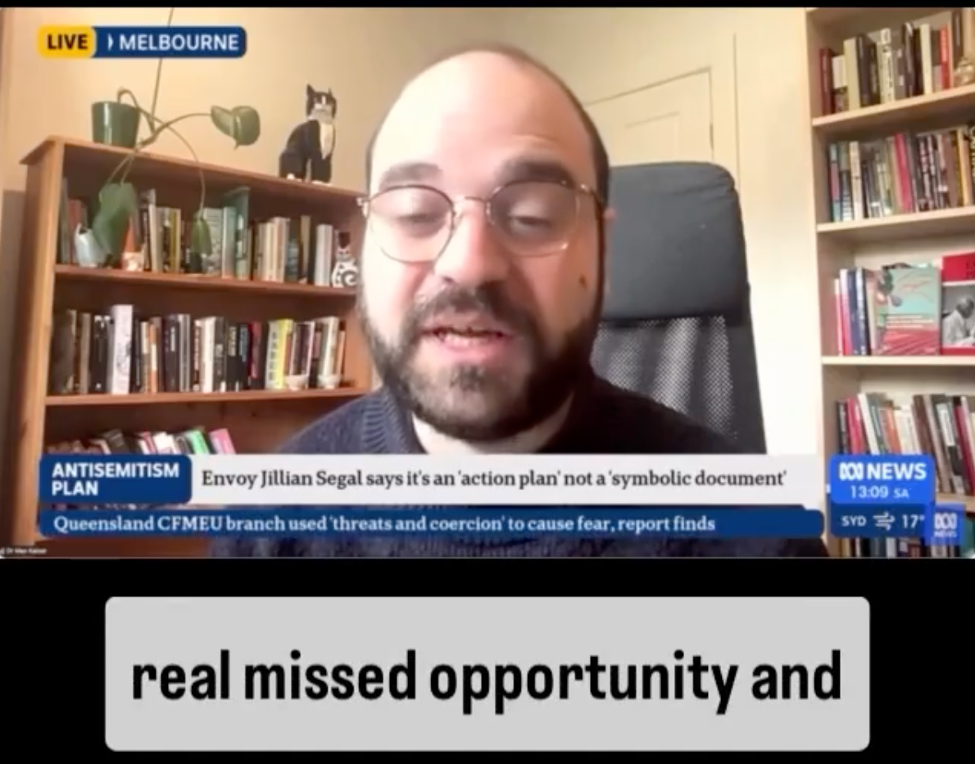
On ABC TV “News” (July 10), Max Kaiser of the anti-Zionist Jewish Council of Australia repeated the myth that IHRA equates all criticism of Israel with antisemitism and argued that antisemitism cannot be “tackle[d]… in isolation from other forms of racism.”
But Kaiser failed to offer any practical steps that would be part of the “holistic” approach that would “tackle” all kinds of racism, as he said he wanted.
It was also obvious that Kaiser refused to accept that any link exists between pro-Palestinian activism and the rise in antisemitism, saying, “overall, the tenor of this report we do think is dangerous because of mislocating what the problem of antisemitism is.”
The sole example he offered was “Elon Musk’s Platform X and his AI software” which “you know, go into extreme antisemitic and Nazi rhetoric.”
Meanwhile, on ABC Radio Triple J “Hack” (July 10), Ruby Kraner-Tucci, acting editor-in-chief of the Jewish Independent – a left-of-centre Zionist website – said this whilst discussing the report: “What’s happening is… that criticism of Israel is allowing very far-right actors to take advantage of that conversation and direct it back towards Jews.” This apparent claim that only the far-right is involved in antisemitism is contrary to all metrics.
Campus intimidation: a first-hand account
On ABC NewsRadio (July 11), Professor Steven Prawer of Melbourne University, a director of 5A (Australian Academic Alliance Against Antisemitism), offered one of the most cogent and nuanced snapshots of the experience of Jewish students and staff on campus and the benefits of Segal’s report.
Prawer recounted: “A group of protesters with their faces masked invaded my private office last year, shouting that I was guilty of genocide. They put up posters in my office and terrorised both my staff and the administrative staff in the adjoining offices. This was not peaceful protest – it was an attempt to intimidate and prevent me from doing my job on campus. This was the extreme of the protest movement, well beyond what’s reasonable at a university.”
Prawer supported Segal’s proposed university “report card”, comparing it to earlier reforms Australian universities were compelled to adopt to tackle sexual harassment:
“We saw immense improvement… because of visibility, accountability, and annual reporting. The same can happen here.”
Prawer was confident that “if universities have to publicly report how they support Jewish students, they’ll be forced to confront their responsibilities regularly.”
Stern words
Kenneth Stern, who helped draft the IHRA precursor text but, unlike just about everyone else of the many involved who were involved in drafting it, is a fierce opponent of its adoption for any purpose other than research, was interviewed on ABC Radio National (July 14), where he warned: “When you start having official definitions of… a particular type of hatred, that leads to… problems reminiscent of McCarthyism.”
His central concern related to the US context, including fears over loss of funding or deportation. Yet, Stern’s example – the 2018 Tree of Life Synagogue massacre in Pittsburgh – was confusingly presented. He did not clarify that the shooter, who was antisemitic, targeted the synagogue because of its outreach to refugees. This example was also problematic given that it had nothing to do with Israel, which is the source of the majority of objections to the IHRA definition.
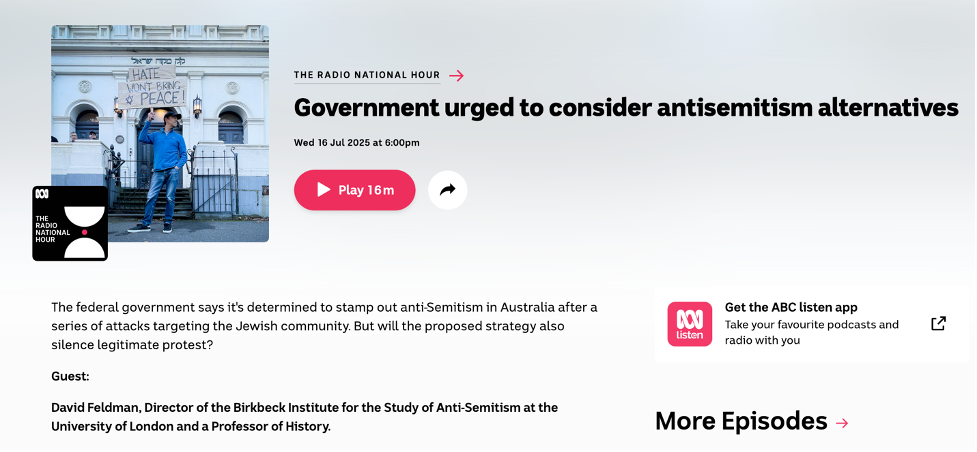
Having attempted to chip away at the credibility of IHRA, on July 16, ABC Radio National “The Radio National Hour” interviewed University of London’s Professor David Feldman, to promote the “Jerusalem Declaration” as an alternative to the IHRA definition.
Feldman asserted that this Declaration – which he co-wrote – is superior to IHRA’s because it resists “the conflation, the confusion between anti-Zionism and antisemitism, which is not to say that anti-Zionism is never antisemitic. It can be, but it need not be.”
Unfortunately, he wasn’t asked to give an example of when anti-Zionism does become antisemitic.
Feldman argued antisemitism is not at crisis levels, saying “The percentage of people with a negative view of Jews has risen from 9% to 13%, which obviously is not good, but it’s of quite a different order [to the claim antisemitic attacks have risen 300 percent in Australia since October 7]. So, the notion that Australia faces a societal problem doesn’t really stand up. What it might suggest is that people with antisemitic ideas are becoming emboldened, but that’s not a phenomenon across the whole of Australian society.”
He might have instead noted that in the ADL’s “Global 100” survey on antisemitism last year, 20% of Australians showed “elevated levels of antisemitic attitudes” up 43% from the previous survey in 2014.
Segal’s report was criticised by Feldman for making no “mention of the need to sustain freedom of speech and academic freedom, and that is a severe lack.”
But Feldman’s moderate tone was undermined by his dismissal of accusations that former British Labour Party leader Jeremy Corbyn was antisemitic and claims that the main problem was that the party “was very poor at identifying antisemitic incidents.”
Share and share alike
Media reports revealing that Jillian Segal’s husband is a director of a family fund that had donated $50,000 to the right-wing political group Advance Australia resulted in a crude misogynistic pile-on from women on the left who implied she must have known about the donation and most likely also shared his views, and thus should never have been appointed by the Government.
Jenna Price in the Canberra Times (July 17) seethed, “how is it even possible that [the Government] did not do a check on those adjacent to Segal? My mind is boggled by this. And how did it think it was appropriate to nominate a person to this role who so clearly supports Israel’s current behaviour? Jews experience anti-Semitism every single day in this country and that’s what needs to be urgently addressed. If you conflate anti-Zionism with anti-Semitism you make it worse for all of us, you make anti-Semitism far more likely.”
Nine Newspapers cartoonist Cathy Wilcox’s offering on July 15 mirrored Price’s odious sexism.
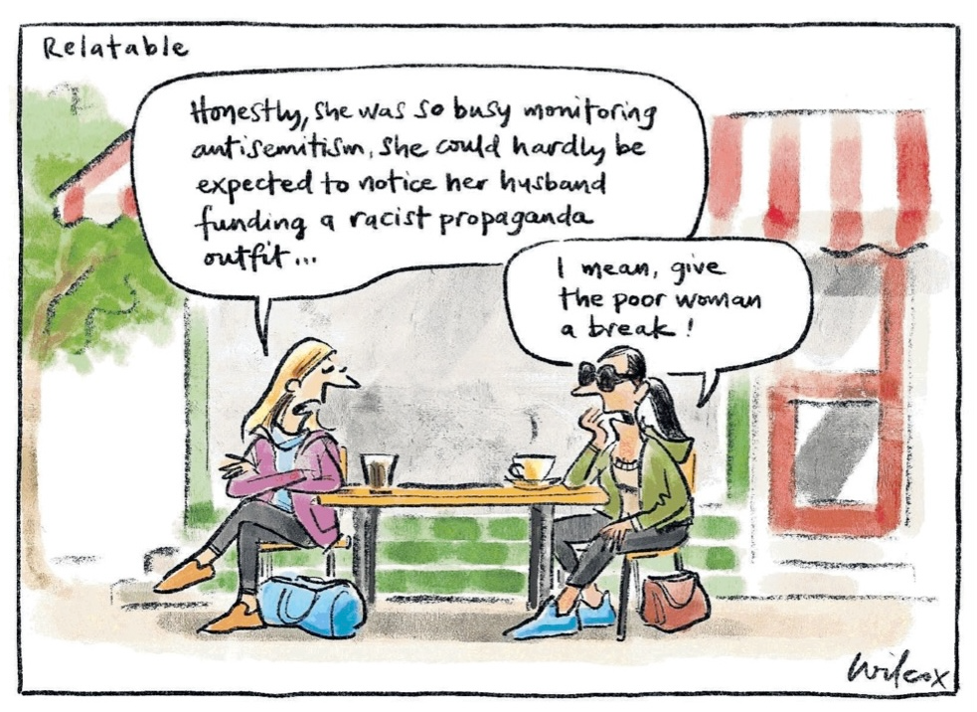
Burke’s backing?
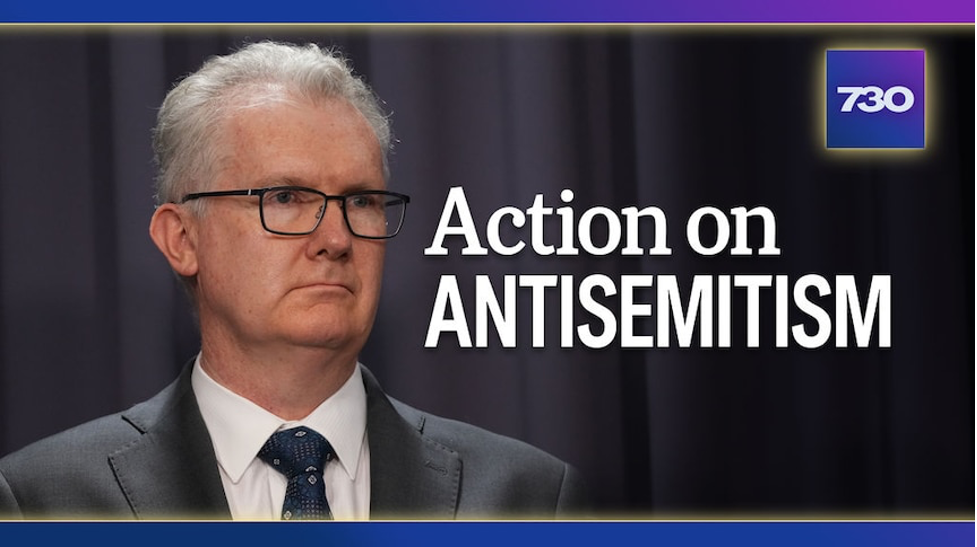
On ABC TV “730” (July 14), Home Affairs Minister Tony Burke rejected the insinuations against Segal, saying, “it’s a long time since we’ve been a country where you would blame a woman for decisions of her husband. And so, with that in mind, I don’t think she’s answerable for her husband. She said she didn’t know about it, and I’ve got no reason to do anything other than believe her.”
Burke also appeared to reject many of the criticisms of the report, including concerns that Segal wanted to “provide antisemitism training to Home Affairs staff and anyone dealing with visas.”
Burke said, “I’ve been encouraging both Jillian Segal as Antisemitism Envoy and Aftab Malik, the Islamophobia Envoy to be engaging with the agencies, including the Department of Home Affairs including with my arts agencies as well.”
He said it was a “good thing” to have “some people… who are able to provide that sort of information [on what constitutes bigotry].”
Burke said he has “found the [IHRA] definition actually pretty helpful,” when deciding visas and ensuring no double standards are applied.
The Clare factor
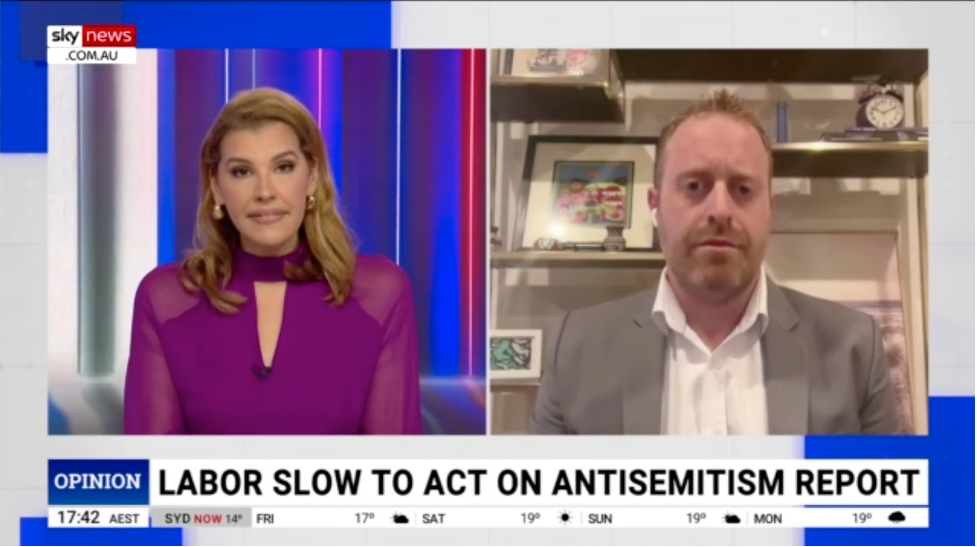
On Sky News (July 18), AIJAC’s Joel Burnie criticised federal Education Minister Jason Clare for saying he was deferring acting upon the report’s recommendations until the Islamophobia envoy’s report is released.
Burnie called Clare’s comments “bitterly disappointing and thoroughly perplexing.”
“Since the events of October 7, in this country, multiple synagogues [have been] burned down, houses of community leaders being targeted, childcare centres, you name it, it’s happened in this country when it comes to antisemitism. But somehow or other, there is an undue delay waiting for another report to come down before… the Education Minister is going to review what was a very comprehensive and detailed report.”
In an earlier Sky News interview (July 10), Burnie said it was sad that the report shows how “every sector of our society has been infected by this systemic antisemitism… It’s ripped the fabric of social cohesion on the streets of Australia.”
A critical bypass
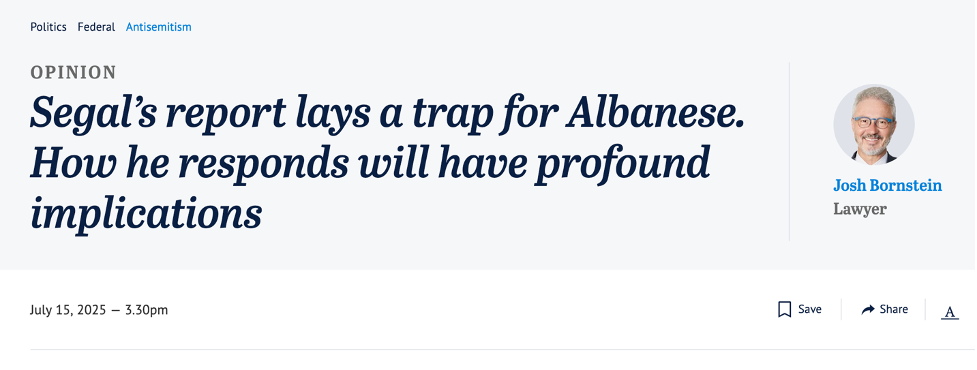
Writing in Nine Newspapers (July 15), perennial Israel critic Josh Bornstein questioned why the Federal Government had “bypassed” the Australian Human Rights Commission (AHRC) and instead created the antisemitism envoy role.
Bornstein wrote, “The AHRC should be an important voice in debates about free speech and hate speech. Instead, it has been rendered largely mute, not even willing to venture its views on the recommendations in Segal’s report.”
Maybe this is because the Commission’s capacity to meet its statutory requirement for objectivity was compromised by revelations in February 2024 that 20% of the AHRC’s 122 staff members had written a letter condemning the organisation for being insufficiently condemnatory of Israel?
Another vituperative piece in Nine Newspapers was Booker Prize winning Australian novelist Richard Flanagan’s op-ed (July 19) that asserted: “Despite the Segal report’s claims about rising antisemitism, some of which are contested as exaggerated by leading Jewish figures, it fails to provide a single citation in evidence. This gifts bigots the untruth that there is no ground for concern when antisemitism has lately presented in shocking ways.”
Somewhat more measured in tone but still antagonistic towards the report was Nine Newspaper columnist Waleed Aly (July 25) who, unlike the two above, acknowledged that the IHRA definition “states ‘criticism of Israel similar to that levelled against any other country cannot be regarded as antisemitic’” and those who say it doesn’t “overstate the position”.
On the plus side, the Age print edition (July 23) ran Australia Israel Labor Dialogue’s Adam Slonim’s powerful defence of Segal’s report and the IHRA definition.
The outlier in Nine Newspapers stable was the Australian Financial Review, which ran two positive op-eds on the report.
On July 15 in the AFR, commentator Michael Easson parsed the differences between legitimate criticism of Israel and antisemitism writing, “of course, political criticism of Israel is legitimate, even warranted sometimes. But antisemitism, a term for anti-Jewish racism and hatred, is not. That is at the heart of Australia’s antisemitism envoy Jillian Segal’s call for effective education, monitoring and management of those who overstep the mark.”
Earlier in the AFR (July 11), Institute of Public Affairs senior fellow John Roskam homed in on the report’s claim that antisemitism is more prevalent among younger Australians.
“When [famed climate activist] Greta Thunberg shouts ‘crush Zionism’ at protests, it’s not surprising young people believe this is activism rather than bigotry,” he wrote.
Adler-brained
In the Guardian Australia (July 12), Louise Adler, publisher and dedicated anti-Zionist, accused the “Jewish establishment” of using the report to weaponise antisemitism, but was herself not above deploying traditional antisemitic tropes.
Adler wrote, “One must acknowledge the remarkably effective Jewish community organisations in Australia behind the latest antisemitism report… With the ability to garner prime ministerial dinners, a battalion of lobbyists has gained access to editors, duchessed willingly seduced journalists keen to enjoy junkets and corralled more than 500 captains of industry to subscribe to full-page ads against antisemitism and thereby blurring political argument with prejudice and bias. It is no surprise that this relentless propaganda effort has paid off.”
She also tried to refute statistics showing a rise in antisemitism, writing, “A childcare centre that was not in fact a Jewish centre was added to the list of terrifying antisemitic attacks.”
Adler apparently doesn’t understand that targeting a childcare centre because of a belief it is linked to Jews, even if that is a mistaken belief, still constitutes antisemitism.
She also conveniently ignored that the Government also appointed a Special Envoy on Islamophobia, who will deliver his report in August.
Australian columnist Henry Ergas filed three withering columns attacking critics of Segal’s list of recommendations, including on July 18 when he slammed Adler.
He said of Adler, in “claiming that the Segal report was a product of what used to be called ‘the Jews’ money power’,” Adler had included a “trope that would warm any anti-Semite’s heart.”
Editorials across the country
Most major newspapers editorialised on the report on July 11. The Sydney Morning Herald wrote: “Antisemitism is not just a threat to Jews; left to run rampant, it infects us all.”
The Age said: “The baseline must be reconciling the urgency of combating antisemitism with defending the rights of free speech.”
The Australian called the plan “comprehensive and necessary”, and the Herald Sun linked antisemitic crimes to social media conspiracy theories and anti-Israel protests.
The West Australian stated: “No other ethnic group is expected to answer for what happens in its ancestral homeland. Except Jews.”
The Daily Telegraph warned of antisemitism from “white and wealthy sectors… dressed up as creative expression.”
Misconceptions about Jews
In the Canberra Times (July 15), columnist Crispin Hull bizarrely said the report was seeking special treatment for Jews, which might be “contrary to the religion clause of the Constitution” because “it favours one religion over another.”
Hull obviously does not comprehend the difference between Judaism – which is the Jewish religion – and the Jewish people who share a distinct national identity.
Crispin also parroted anti-IHRA definition propaganda, claiming that “the text of the definition is not the problem; rather, it is the fact that seven of the 11 illustrative examples referred to criticism of Israel and therefore suggest that any criticism of Israel can amount to anti-Semitism.” This is not true, as anyone who actually reads the definition, as opposed to the talking points of its critics, would know.

For a better understanding of why it is simply false to claim that seven of the 11 examples refer to criticism of Israel, read AIJAC’s Tzvi Fleischer’s analysis here: https://aijac.org.au/australia-israel-review/scribblings-the-big-lie-about-the-ihra-antisemitism-definition/
Overall, as the news cycle inevitably turned to other matters – including the latest developments in the Hamas-Israel conflict – the tenor of the ongoing coverage and discussion did not concern the report’s efforts to identify practical measures to counter antisemitism in Australia. Instead, much of it exuded hostility towards any such practical efforts in the sort of terms that Segal herself warned risked stirring up animus towards Australia’s Jewish community.
Tags: Australia, Media/ Academia
RELATED ARTICLES
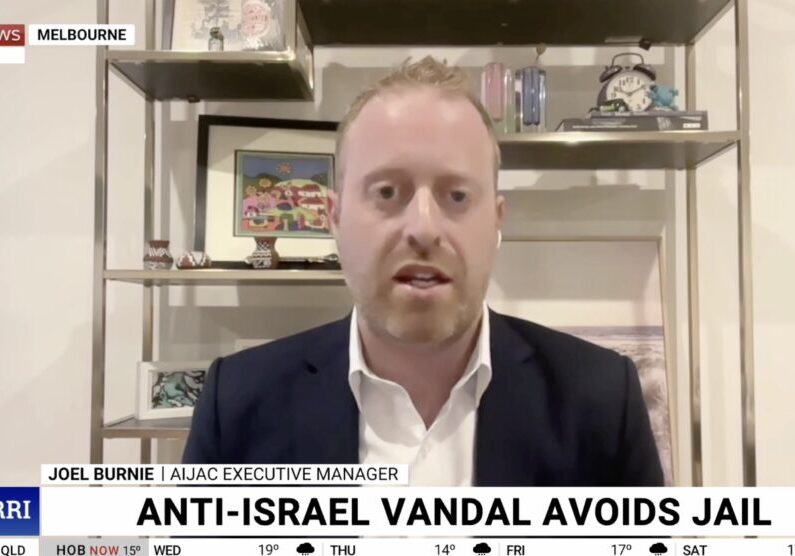
Sentencing for antisemitic vandalism “manifestly inadequate”: Joel Burnie on Sky News
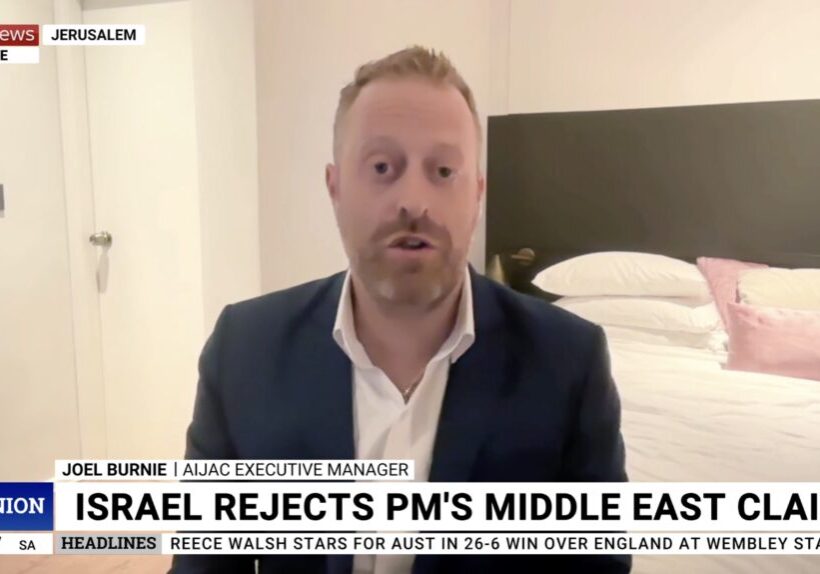
“Bittersweet” aftermath of hostage release deal: Joel Burnie on Sky News
